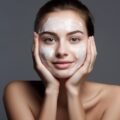Introduction
The summer months can be harsh on our skin. The strong sun, increased sweating, and humidity can cause a variety of skin issues if we don’t adjust our routines. While some ingredients help shield our skin, others can make summer skin woes even worse. In this article, we’ll look at 5 skin care ingredients to avoid during the hot summer months and suggest better alternatives.
1. Retinoids
Retinoids like tretinoin and retinol help increase skin cell turnover. However, they also make skin more sensitive to sunlight. Continued use during summer can increase chances of sunburn, rashes, and hyperpigmentation. Those using retinoids should switch to gentler alternatives like niacinamide or vitamin C derivatives until temperatures cool.
2. Acids
Alpha hydroxy acids (AHAs) like glycolic and lactic acid help exfoliate dead skin cells. Beta hydroxy acids (BHAs) like salicylic acid penetrate oils and unclog pores. But both make skin more vulnerable to UV damage. It’s best to avoid leave-on AHAs/BHAs or acids in cleansers while spending time outdoors.
3. Essential Oils
Plant oils like lemon, bergamot, and lavender contain antimicrobial compounds and fragrances. But phototoxic reactions can occur when applied before sun exposure, causing redness, blistering, and hyperpigmentation. Those with sensitive skin should avoid essential oils in summer skincare products.
4. Hydroquinone
Hydroquinone lightens areas of hyperpigmentation. But it too increases photosensitivity. Continuing hydroquinone with sun exposure raises chances of ochronosis, where skin darkens in localized patches. Save this ingredient for nighttime application in fall and winter instead.
5. Synthetic Fragrances
Fragrances, whether natural or synthetic, can cause skin irritation, allergies, and phototoxicity. Common offenders include limonene, linalool, eugenol, geraniol, and coumarin. It’s best to avoid heavily scented products while skin is vulnerable.
Better Summer Skincare Ingredients
While some ingredients should be limited or avoided in summer, others can provide skin protection and soothe common issues like sunburns, rashes, irritation, and oiliness. Look for lightweight gels, creams, and serums containing:
- Aloe vera
- Green tea
- Vitamin E
- Hyaluronic acid
- Niacinamide
- Dimethicone
- Beta-glucan
- Colloidal oatmeal
FAQ
What is photosensitivity?
Photosensitivity refers to skin’s increased sensitivity to sunlight after using or consuming certain ingredients or medications. Photosensitizing substances make skin more vulnerable to sunburn, rashes, blistering, discoloration, and other reactions when exposed to UV rays.
Why does photosensitivity happen?
Ingredients may interact with skin proteins and change how skin cells absorb and reflect light. They can also generate more free radicals or reactive molecules, which damage skin under solar radiation. People with fair skin and multiple moles tend to be most susceptible.
What are some common photosensitizing ingredients?
Top offenders include alpha hydroxy acids, beta hydroxy acids, hydroquinone, retinoids, essential oils like bergamot, antibacterial agents, nonsteroidal anti-inflammatory drugs, and certain antibiotics. Always check labels on both skincare and oral medications before sun exposure.
Can I still go outside if using these products?
You don’t necessarily need to hide indoors all summer. Just be diligent about sun protection through shade, protective clothing, wide-brimmed hats, and broad spectrum SPF 30+ sunscreen applied liberally every 2 hours. Avoid prolonged exposure during peak sun hours. Be on the lookout for any skin reactions.
When is it safe to resume use of photosensitizing ingredients?
It’s best to save products with alpha hydroxy acids, beta hydroxy acids, hydroquinone, and retinoids for nighttime application in fall and winter. You can incorporate essential oils into your routine year-round but avoid applying them right before sun exposure.









